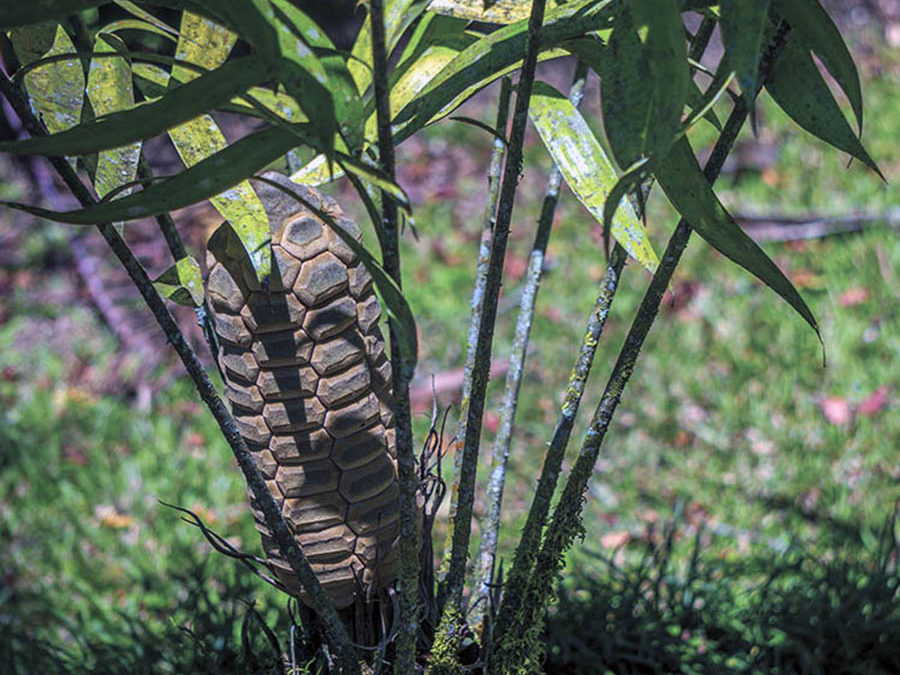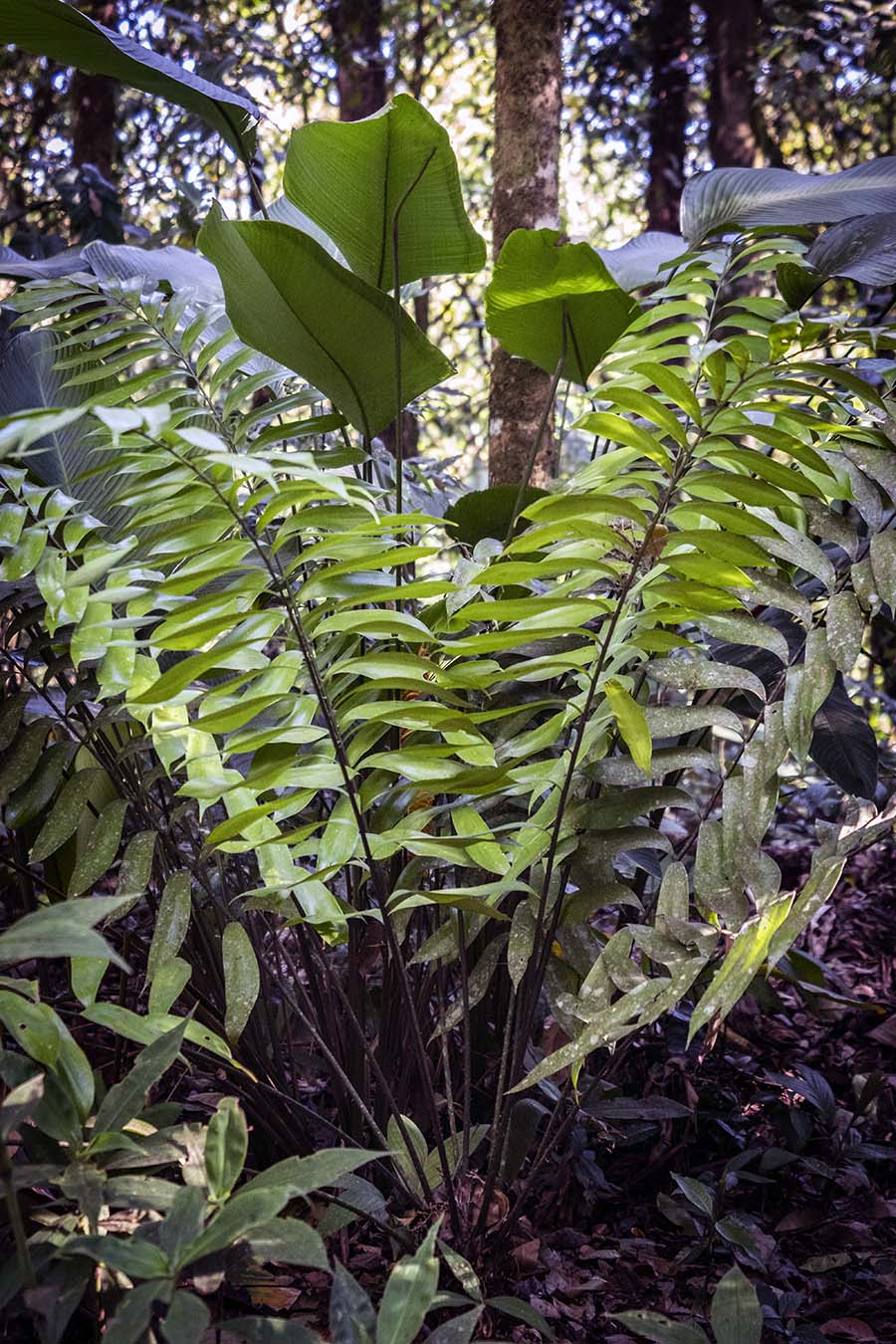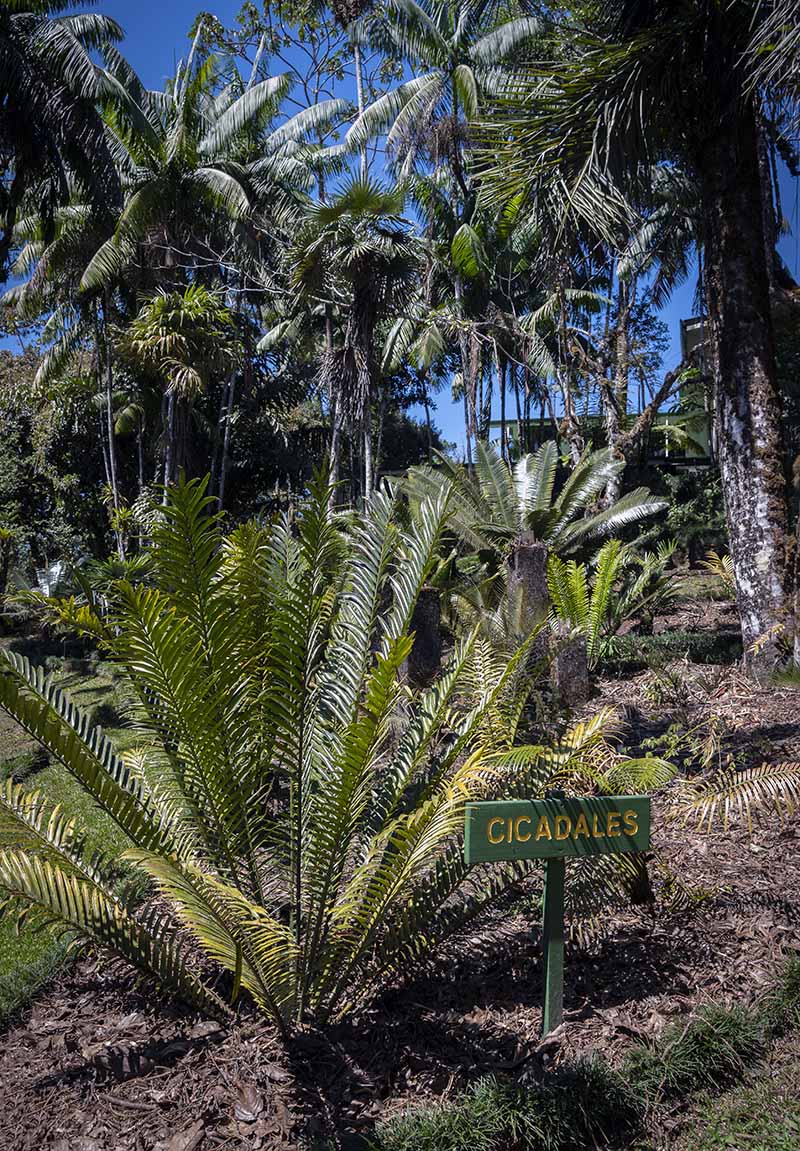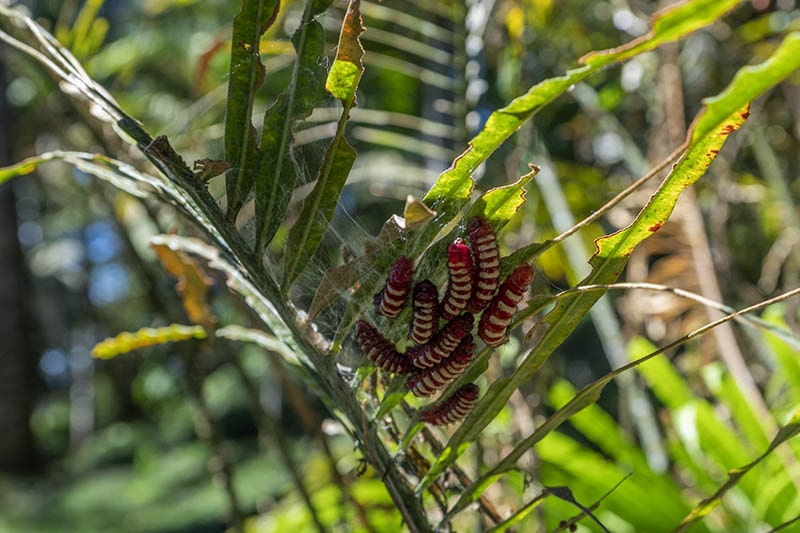Zamia is the only living genus of cycads native to Costa Rica. The most recent reports include 5-6 Zamia species (depending on the source), two of which are described by cycad experts as endemic (E).
- Zamia fairchildiana
- Zamia pseudomonticola
- Zamia acuminata (E)
- Zamia gomeziana (E)
- Zamia neurophyllidia
- Zamia obliqua
What are Zamia?
Zamia is a group of plants endemic to the New World (only live in the Americas). The first one identified was officially named Zamia pumila by Carl Linnaeus back in 1762. At that time, some West European botanical gardens (such as those in Leiden and Amsterdam) already had some specimens acquired during expeditions to the West Indies.
How many Zamia in Central America?
79 Zamia species have been described and the list is constantly growing. Their present range spans most of the tropical Americas, from southeastern Georgia and Florida down to northern Argentina. In Costa Rica, Zamia grows on both the Pacific and Atlantic coasts.
Despite Costa Rica’s status as a biodiversity hotspot in Central America (and in the world), its cycad list is relatively short. In contrast, neighboring Panama (of a similar size to Costa Rica), has at least 17 different living Zamia species. Moreover, a huge variety of cycads has been described in Mexico (62 cycad species, including 17 Zamia). Nicaragua, on the other hand, has a single Zamia species (Zamia neurophyllidia), which is also “shared” with Panama and Costa Rica!
Zamia Biodiversity Hotspot or Not?
Puzzled by these differences, I have investigated and found a recent biogeographic Zamia study by an international group of scientists. This team analyzed the genetic “relatedness” of 70 American Zamia species using leaf DNA samples from Cyclades plants of known origin (found in the wild or from botanical collections). By doing so, they were able to organize them in 3-4 related clusters.
According to the Zamia distribution map in a recent publication, there is a large “dead zone”, with no known living Zamia species. The gap covers most of Nicaragua, El Salvador and Honduras and separates the Mesoamerican group (which includes Mexico) from the Central American group (includes Costa Rica as its northern “frontier”).
Despite the numeric differences between Costa Rica and Panama in Zamia species, it is still reasonable to consider both countries as “biodiversity hotspots” for Zamia in terms of species density. See the diagram of Zamia species richness across South and North Americas.
Where to Find Zamia in Costa Rica
If you’d like to find Zamia fairchildiana and the closely related Z. pseudomonticola and Z. acuminata in the wild, the humid lowland and mid-elevation areas (up to 1600 m) along the Pacific Coast of the country would be the best spots. Most of the collected “plain-leaflet” Zamia samples and reports originate from the Puntarenas Province (Osa peninsula, San Vito area, La Amistad NP) and some areas of the bordering San José and Alajuela provinces.
The “pleated-leaflet” Zamia neurophyllidia (referred to as Z. Skinneri by older reports) with distinctive broad veined leaflets, has only been found on the Atlantic Coast of the country.
Zamia Collections of Wilson Botanical Garden and Finca Cántaros
The easiest way to see Costa Rican Zamia cycads (the most common varieties) is to visit the Wilson Botanical Garden in San Vito. Although more known for its world second largest collection of palm trees, it also has a variety of Asian, African, Australian and American cycads. Many of the cycads in the botanical garden are large mature plants and several had either female or male cones “on display” during our January visit.
On our recent trip to Southern Costa Rica, we have also found plants of Zamia fairchildiana in the “Zamia Zone” of the gorgeous private gardens of Finca Cántaros (open to the public). This small “nature reserve” is located just a couple of miles away from the Las Cruces Biological Station and the Wilson Botanical Garden and is well worth a 1-2 hour visit.
Costa Rican “Cycad List” in Flux
The original Costa Rican cycad taxonomy was compiled by Luis Gomez in 1982, a prominent Costa Rican botanist and former director of Museo National of Costa Rica and Las Cruses Biological Station and Wilson Botanical Garden. It listed 6 species, including the only known epiphytic (growing on trees) form of Zamia, Z. pseudoparasitica. That species was never confirmed living in Costa Rica and is considered a Panama endemic. Z. chigua has been removed from that list. Moreover, the Costa Rican Z. skinneri has been reclassified into the closely related Zamia neurophyllidia.
Recently Discovered Costa Rican Zamia
The relatively new species of Zamia gomeziana (similar in appearance to the Zamia species of the Pacific slope) was found on the Atlantic coast in Limón Province in 2010. The new species has been so far represented by a single female plant, but the hopes are still high to find more samples in the same remote region bordering Panama.
Reading the story of this new Costa Rican Zamia, brought back the memories of the “loneliest cycad in the world” (we stumbled upon in the Kirstenbosch Botanical Garden, while visiting Cape Town in South Africa). Only a single male plant of this species (Encephalartos woodii) was ever found in the wild. However, one hundred years later, close to two hundred individual plants grown from the original cycad can be found today in various botanical gardens and even in some private collections around the world. Despite its much more modest looks in comparison to E. woodii, there is still a hope that Zamia gomeziana will not disappear without a trace.
Z. gomeziana’s name was dedicated to the prominent Costa Rican botanist Luis Diego Gómez after his passing in 2009. In addition to the original classification of the Costa Rican cycads, Dr. Gomez made a remarkable contribution to “mapping out” and describing countless plant species of the country. He also served as a director of the National History Museum in San Jose and the renowned Las Cruses Biological Station in San Vito. Under his tenure, both institutions (including the Herbario Nacional) flourished and attracted wide attention and support from the international scientific community.
“Pick Your Poison”
During our visit of the Cycad section of the Wilson Botanical Garden, we could not help but notice the bright-colored caterpillars gorging on zamia leaflets. Like most other cycads, Costa Rican zamia are poisonous to animals and humans. However, it is not toxic to these larvae of of White-tipped Cycadian (Eumaeus godarti), a small colorful Hairstreak butterfly, which prays on leaves and cones of Costa Rican zamia.
Despite the damage to the plants, some experts believe that this butterfly and Zamia might be in a mutually beneficial relationship called “opportunistic semi-mutualist symbiont”. I know, it is a mouthful for the most of us. By eating the “casing” of mature female cones of zamia, but leaving the seeds intact, the larvae might help cycads to disperse their seeds and to speed up the germination process.
As for the poison, the insects store and use the ingested toxic substance produced by Zamia against their own enemies, who will think twice before grabbing their dinner. Those bright colors of the larvae are just the “keep-off’ signal to their potential predators.




